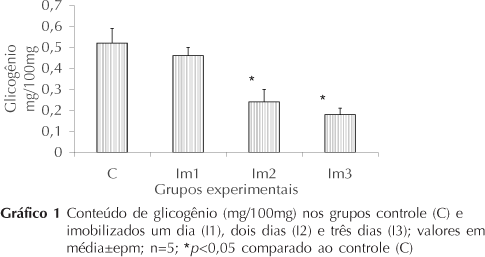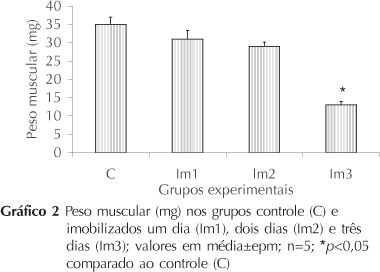The purpose of this study was to outline a physiological profile of the soleus muscle during the acute phase of joint immobilization at a 90º position. Male Wistar rats were divided into four groups (n=6): Control (C), immobilised for 1 (Im1), 2 (Im2), and 3 (Im3) days. After the experimental period, the soleus muscle was obtained in order to assess: glycogen content, muscle weight, hydration index, and protein-DNA interactions. Data were statistically analysed and significance level set at p<0.05. On the first day, no changes were observed on glycogen content, but progressive reduction was witnessed along the following days -53% on the second day and 65% on the third day of immobilization. Muscle weight suffered a reduction of 28.57% only on the third day, while hydration index increased 6.44% on the second day and 8.58% on the third day. Concentrations of DNA raised 43.18% on the first day, 59.09% on the second, and 75% on the third day. Protein concentrations also increased, reaching values of 45.9% on the first day, 32.25% on the second day, and 58.95% on the third day. These results suggest that muscular hypotrophy is an early-developing process, involving chemical-physiological alterations that are launched during the acute phase of immobilization.
Immobilisation; Muscle, skeletal; Muscular atrophy





